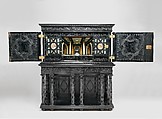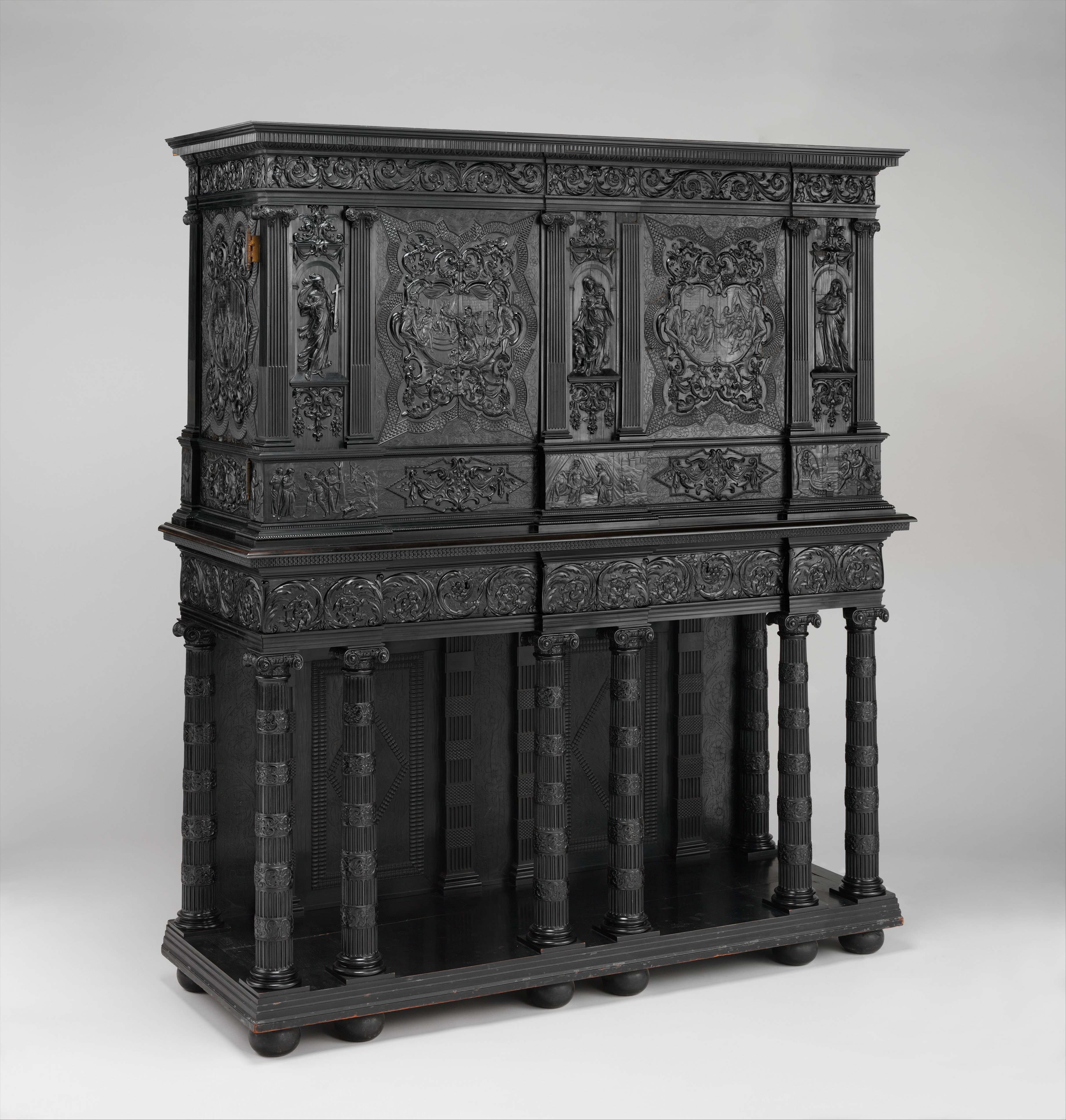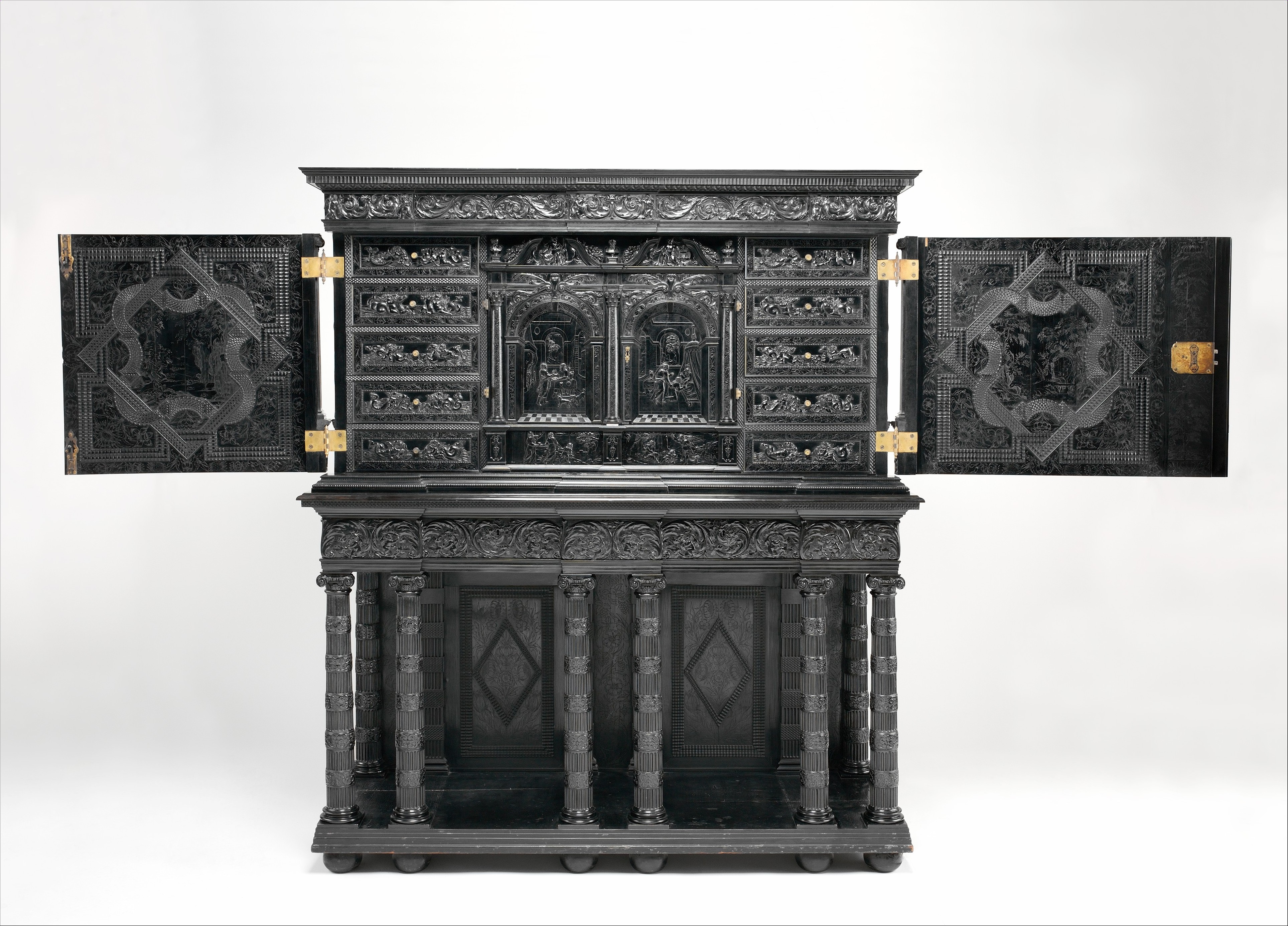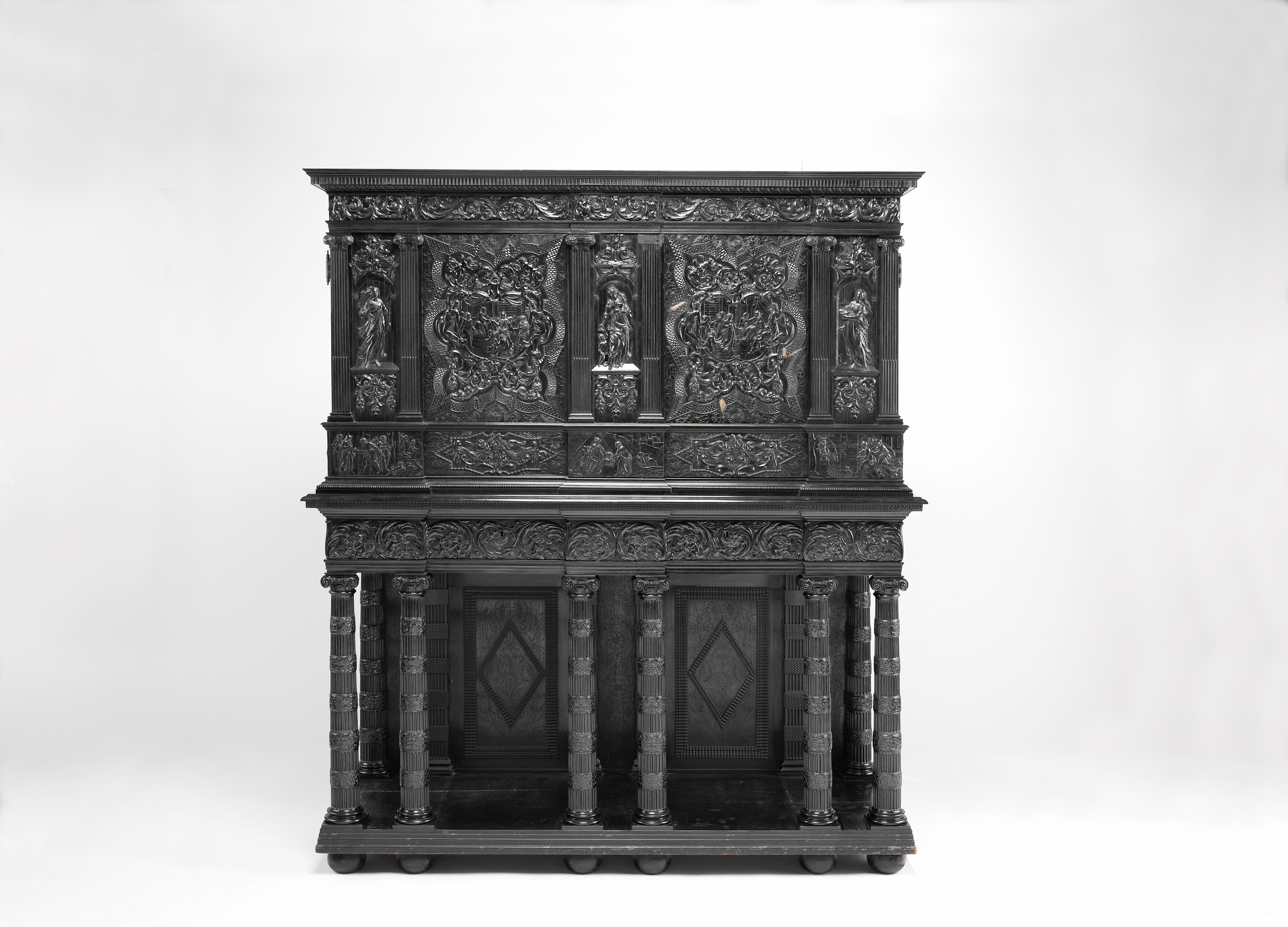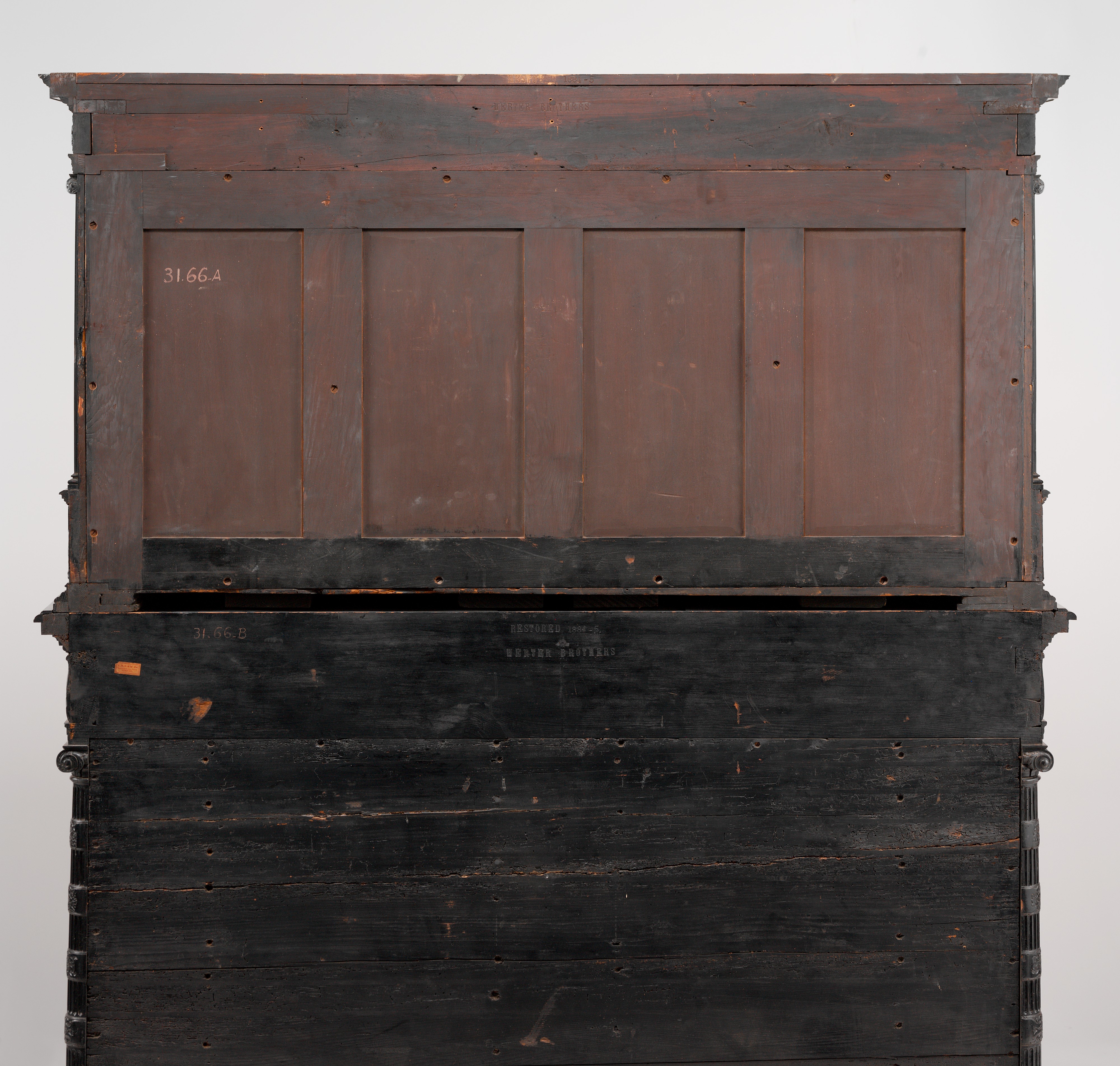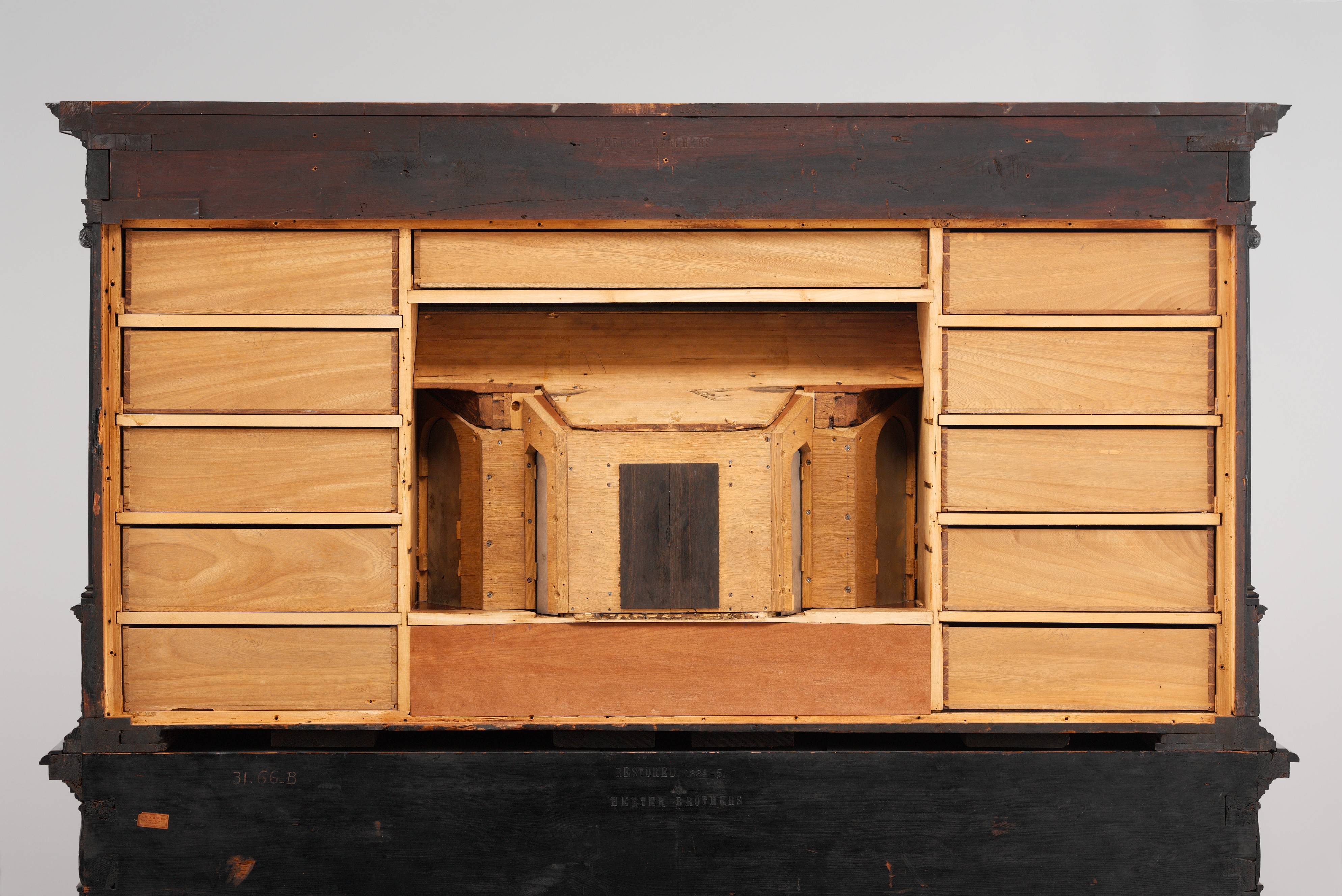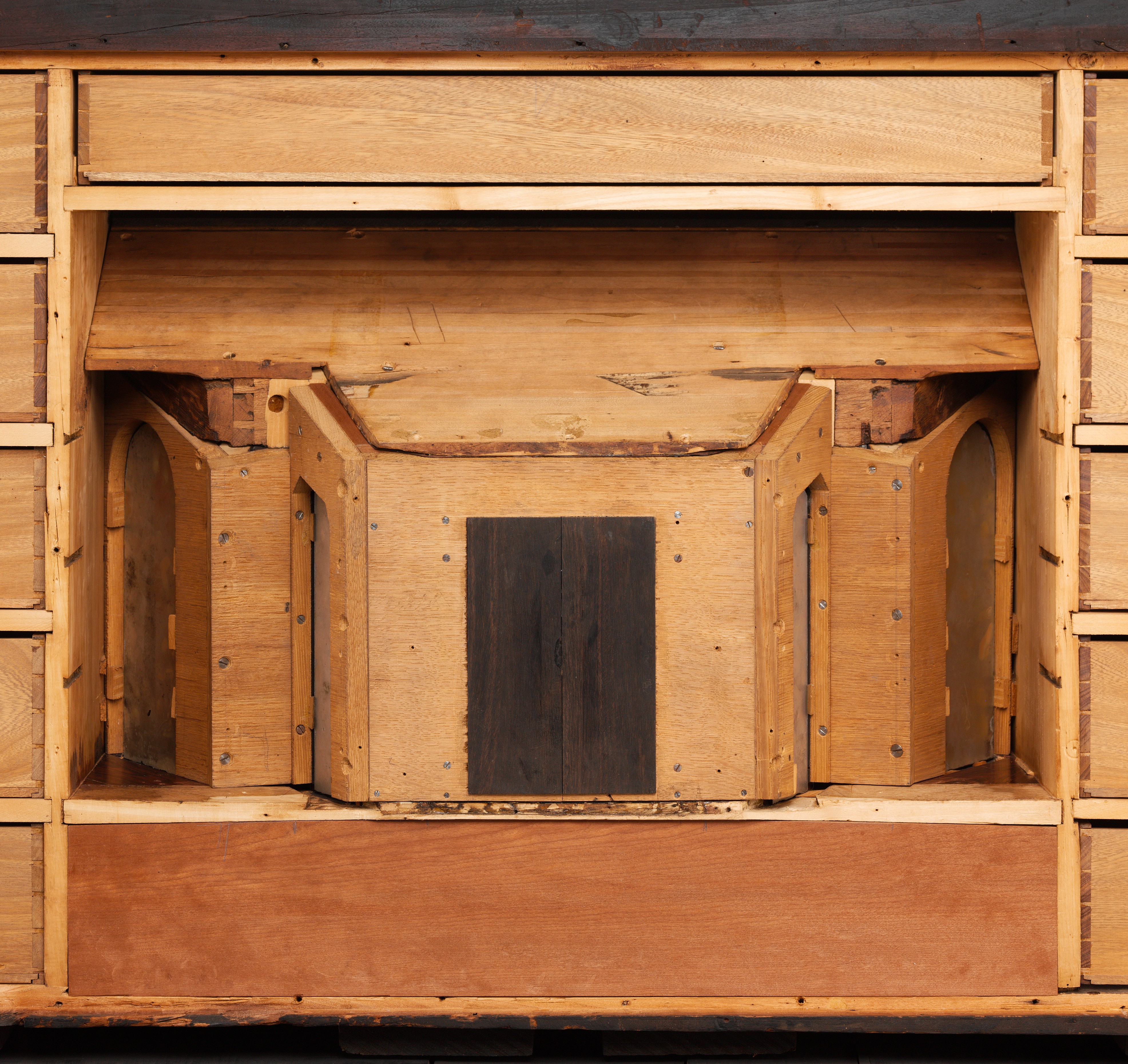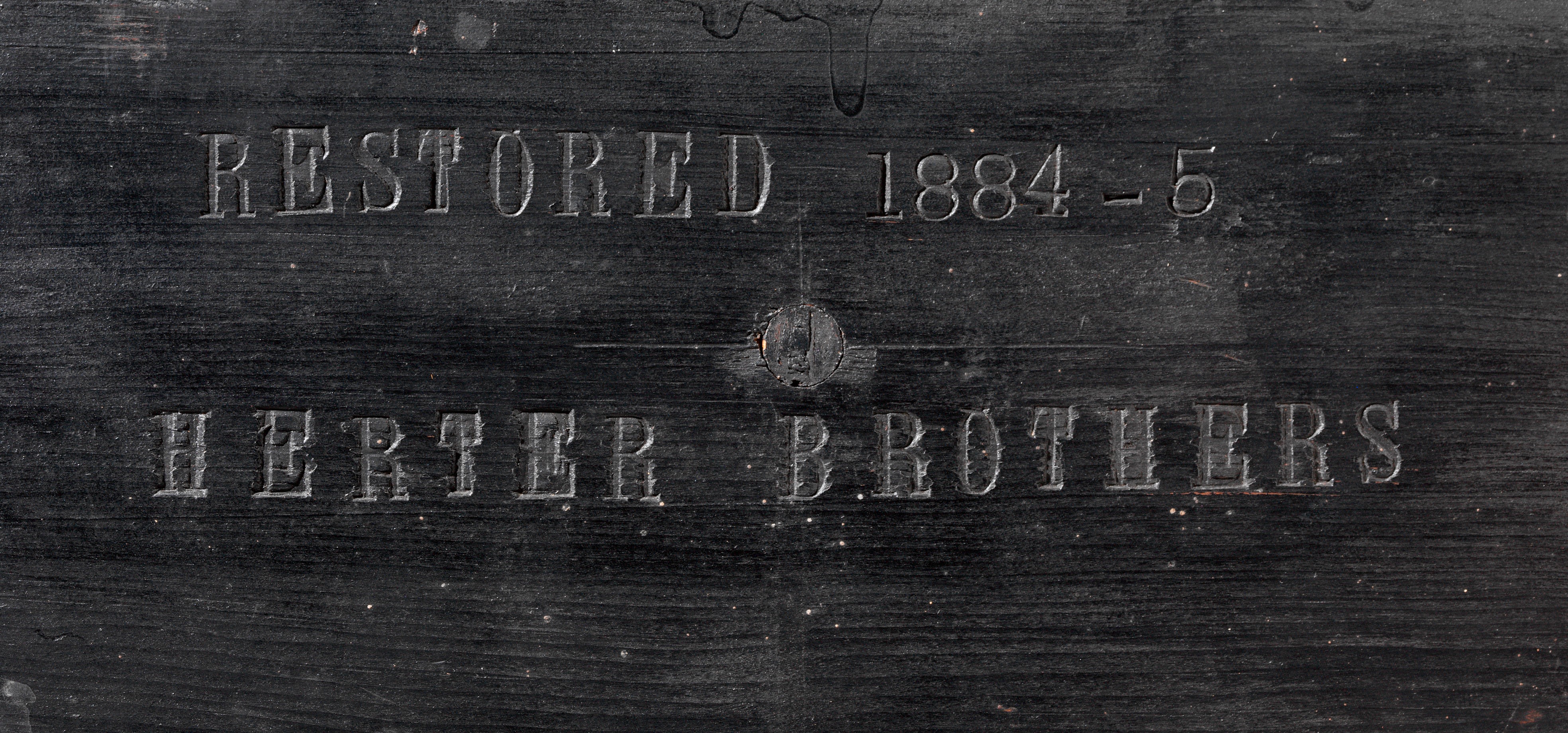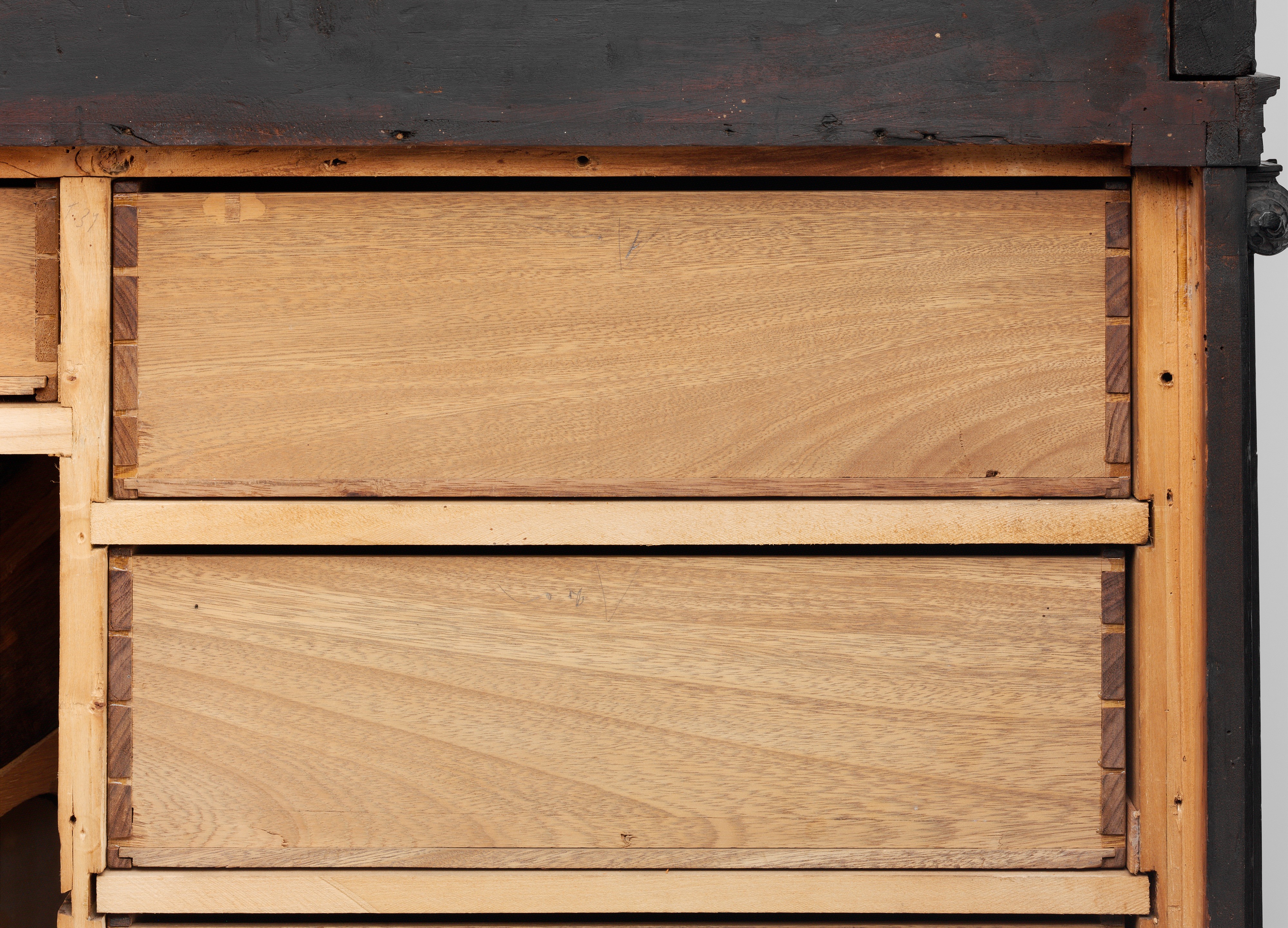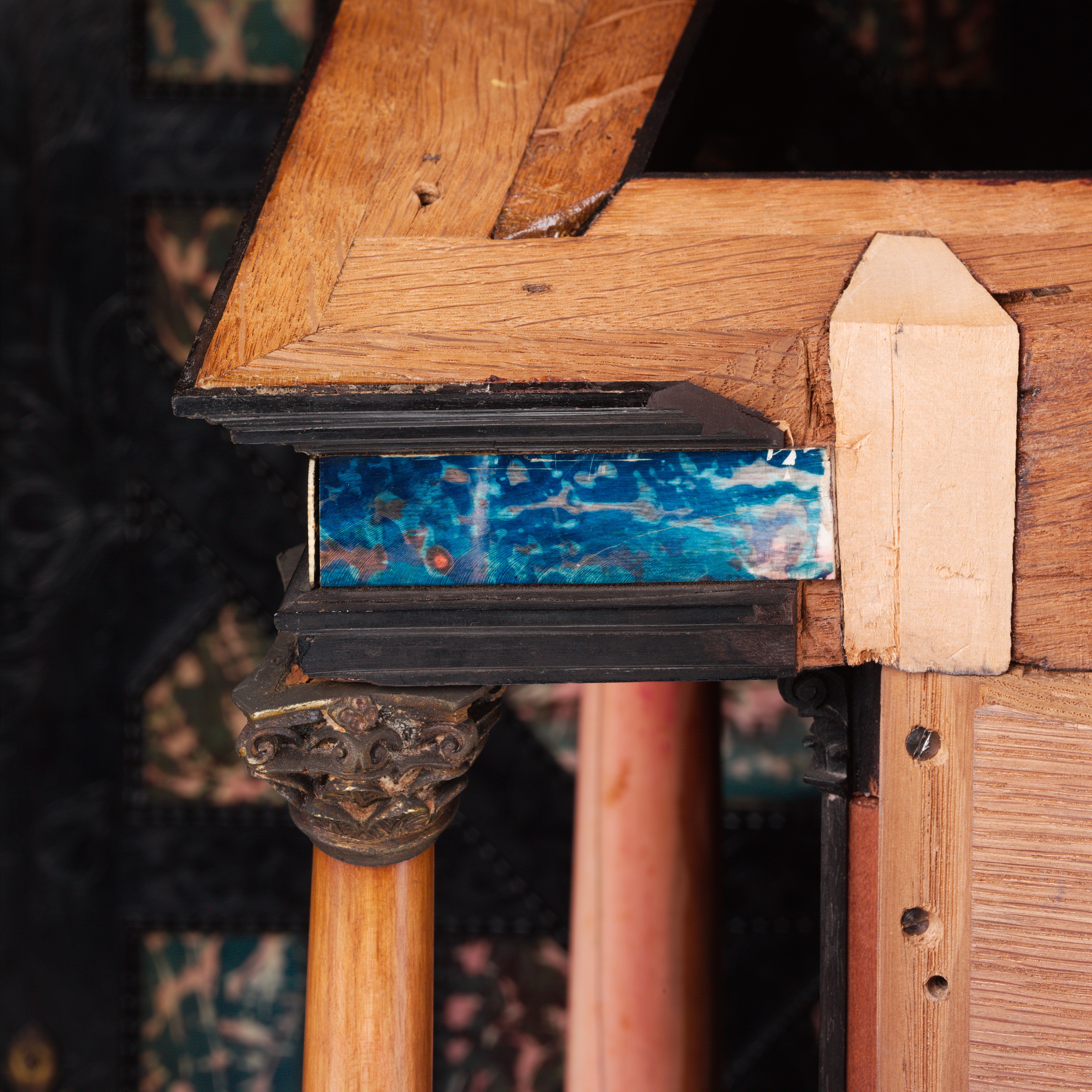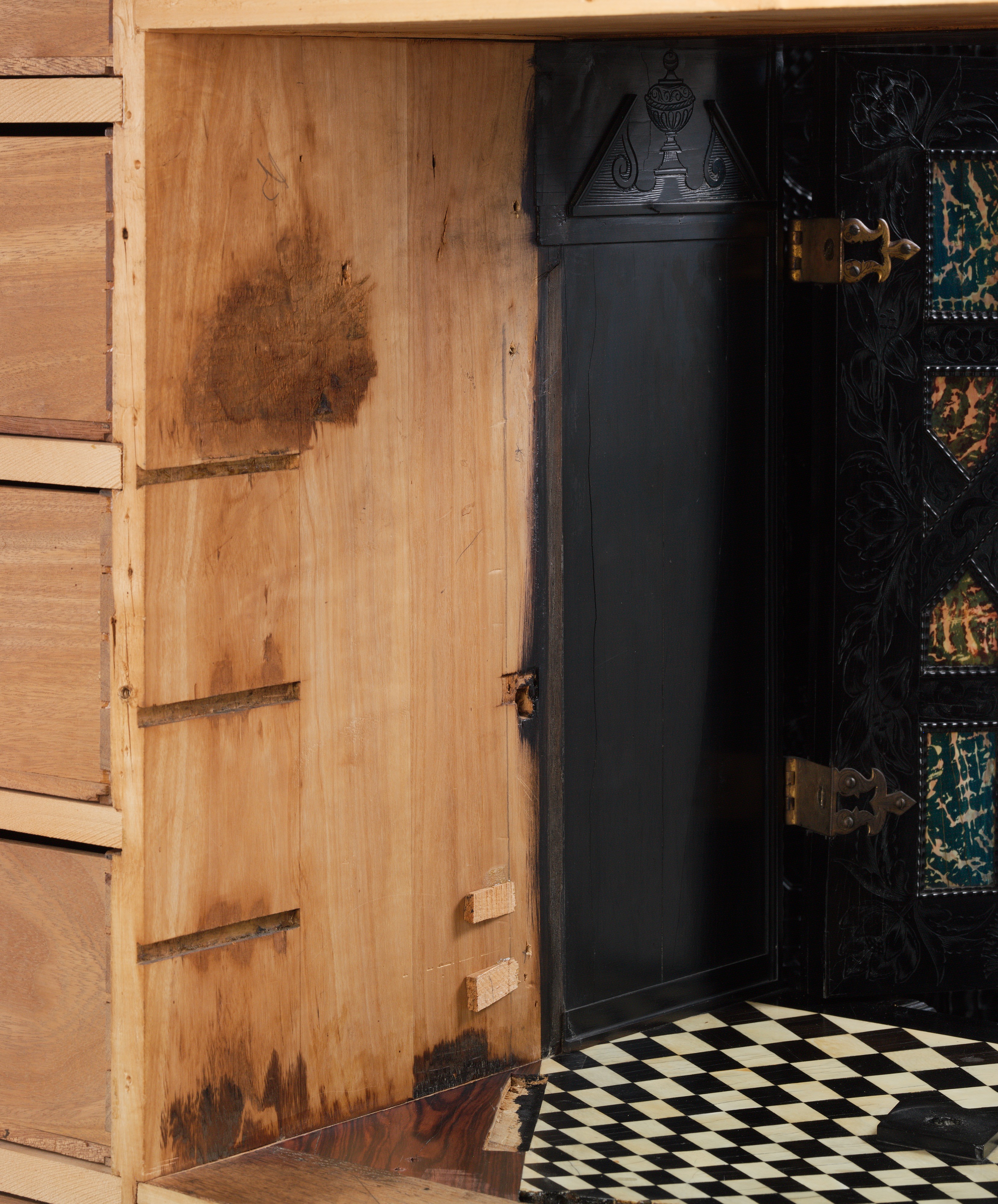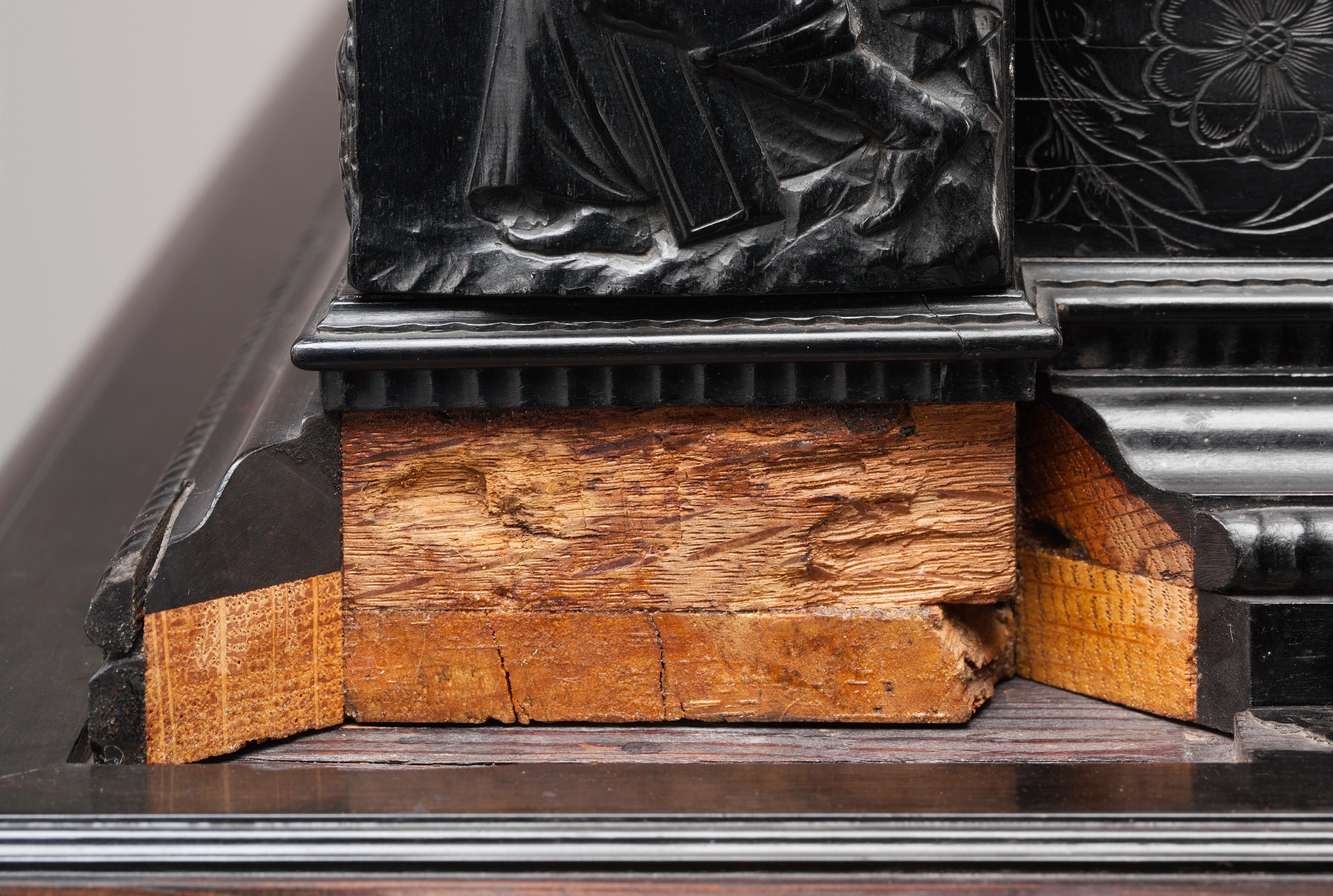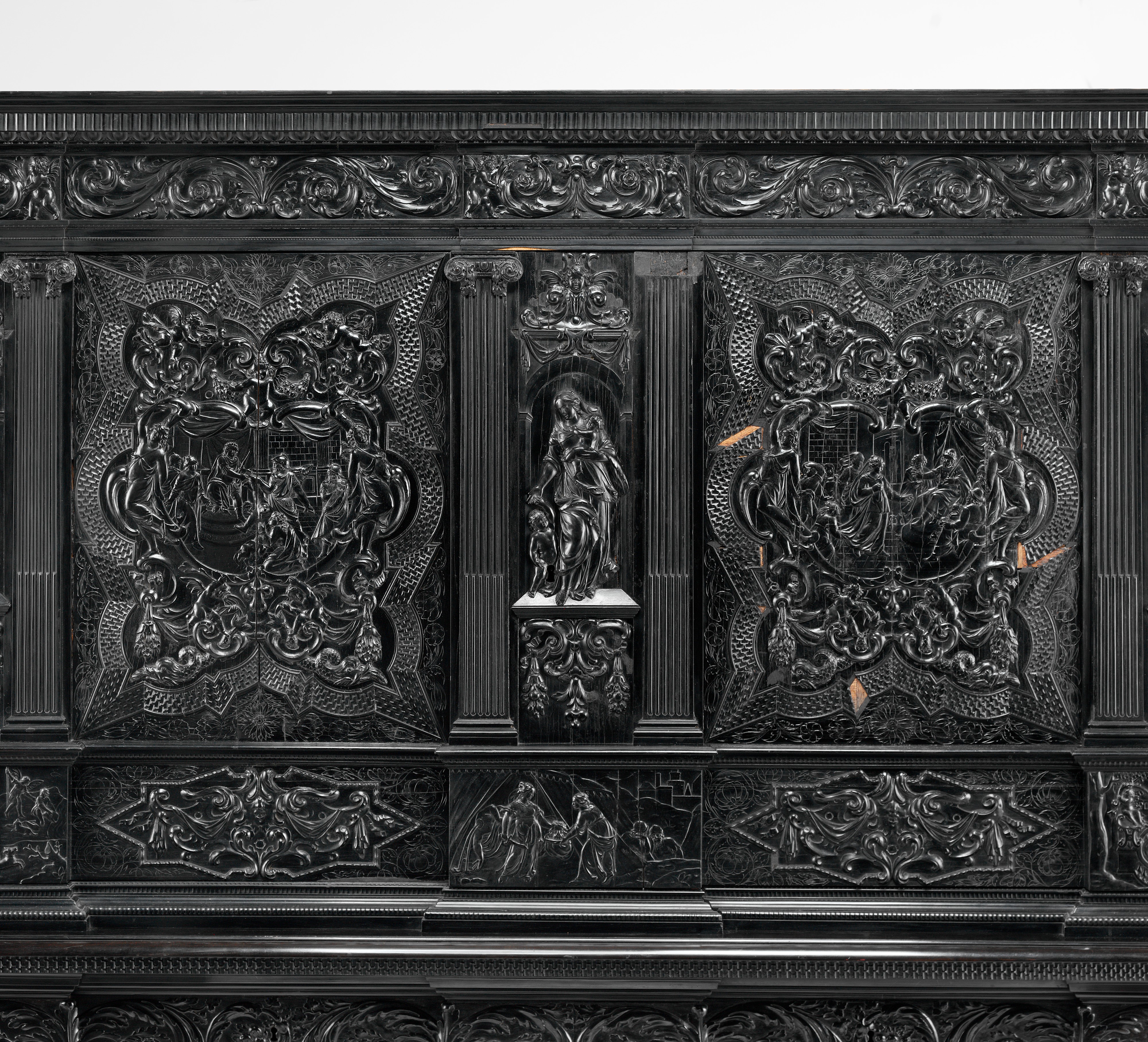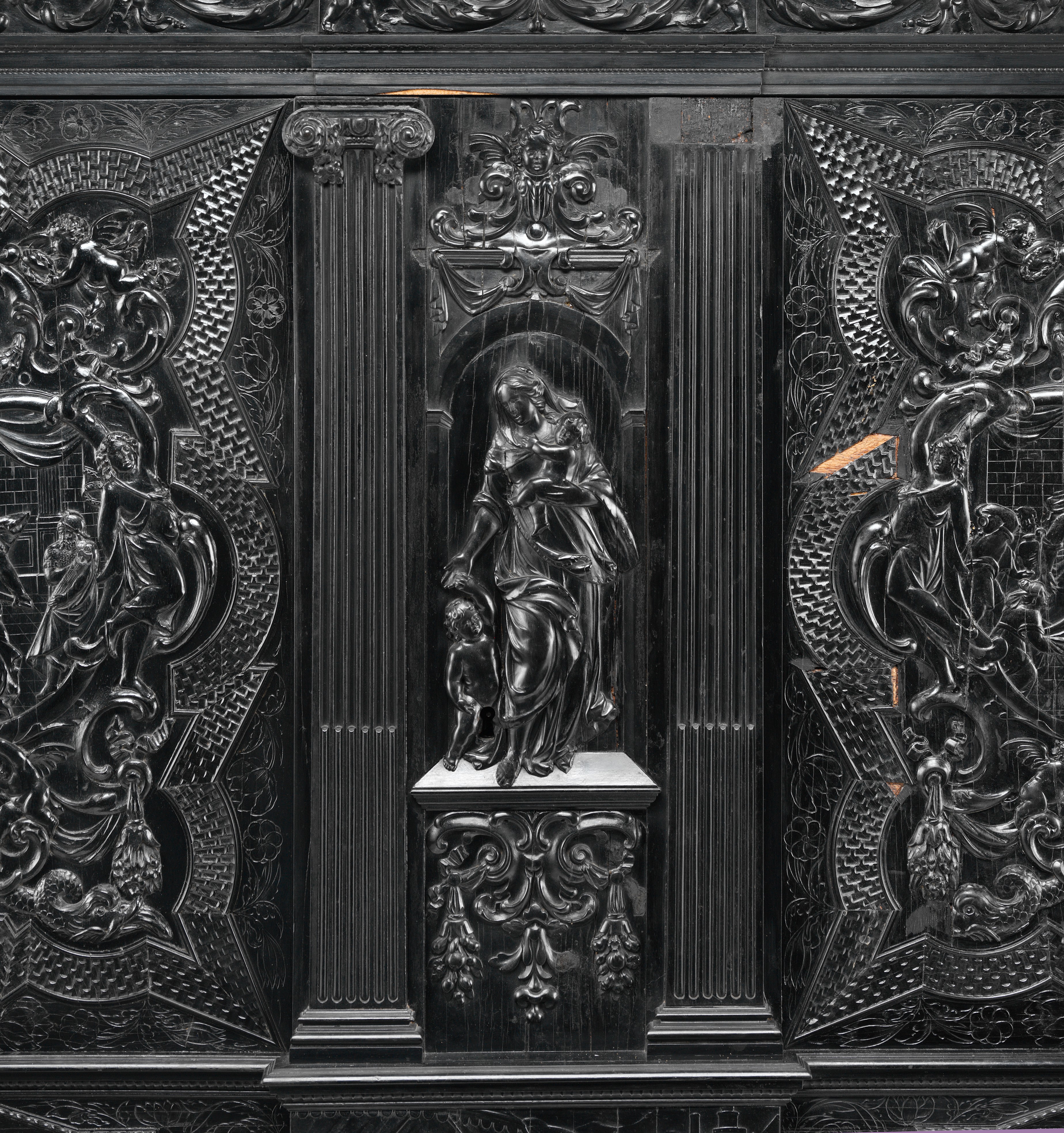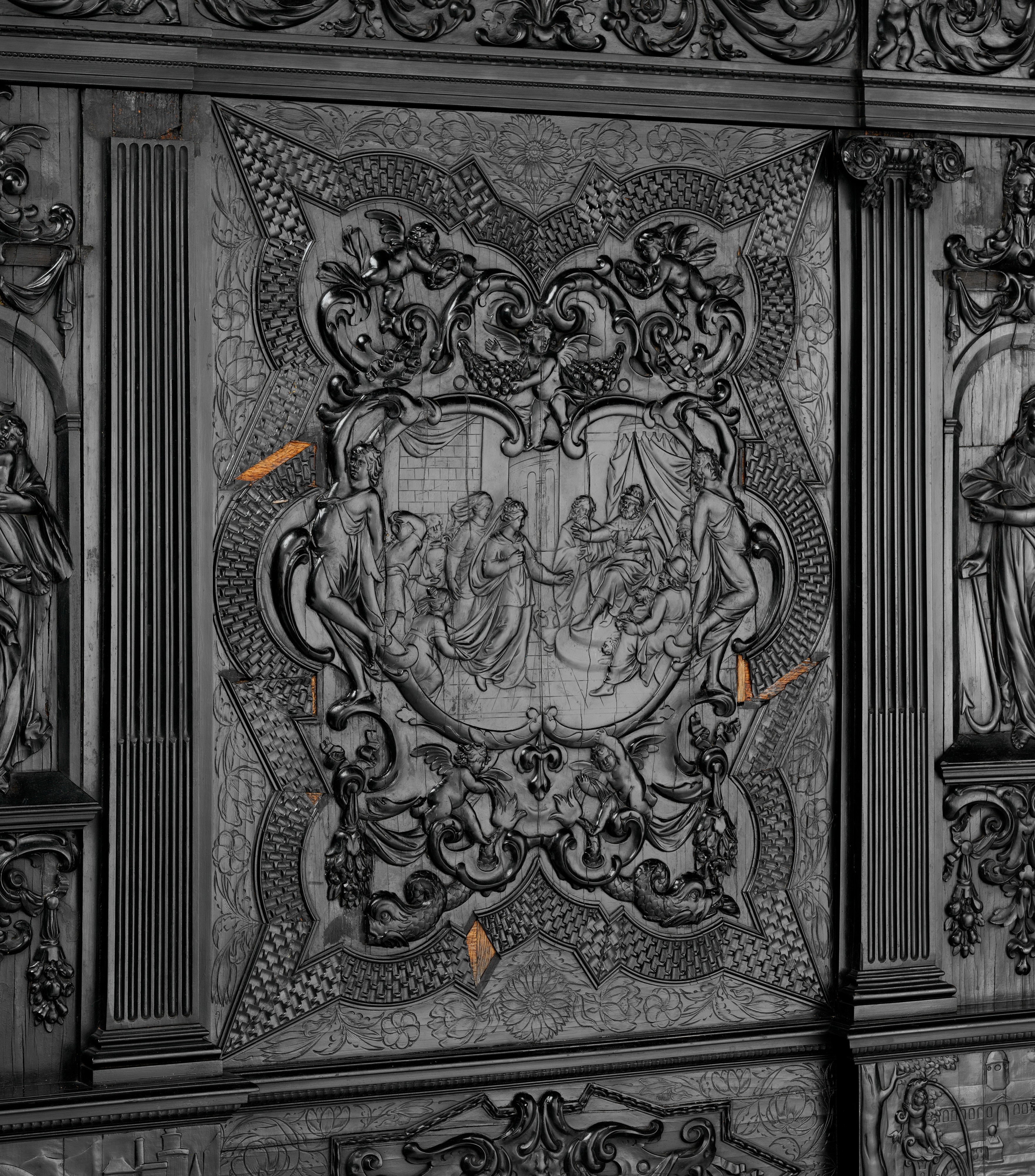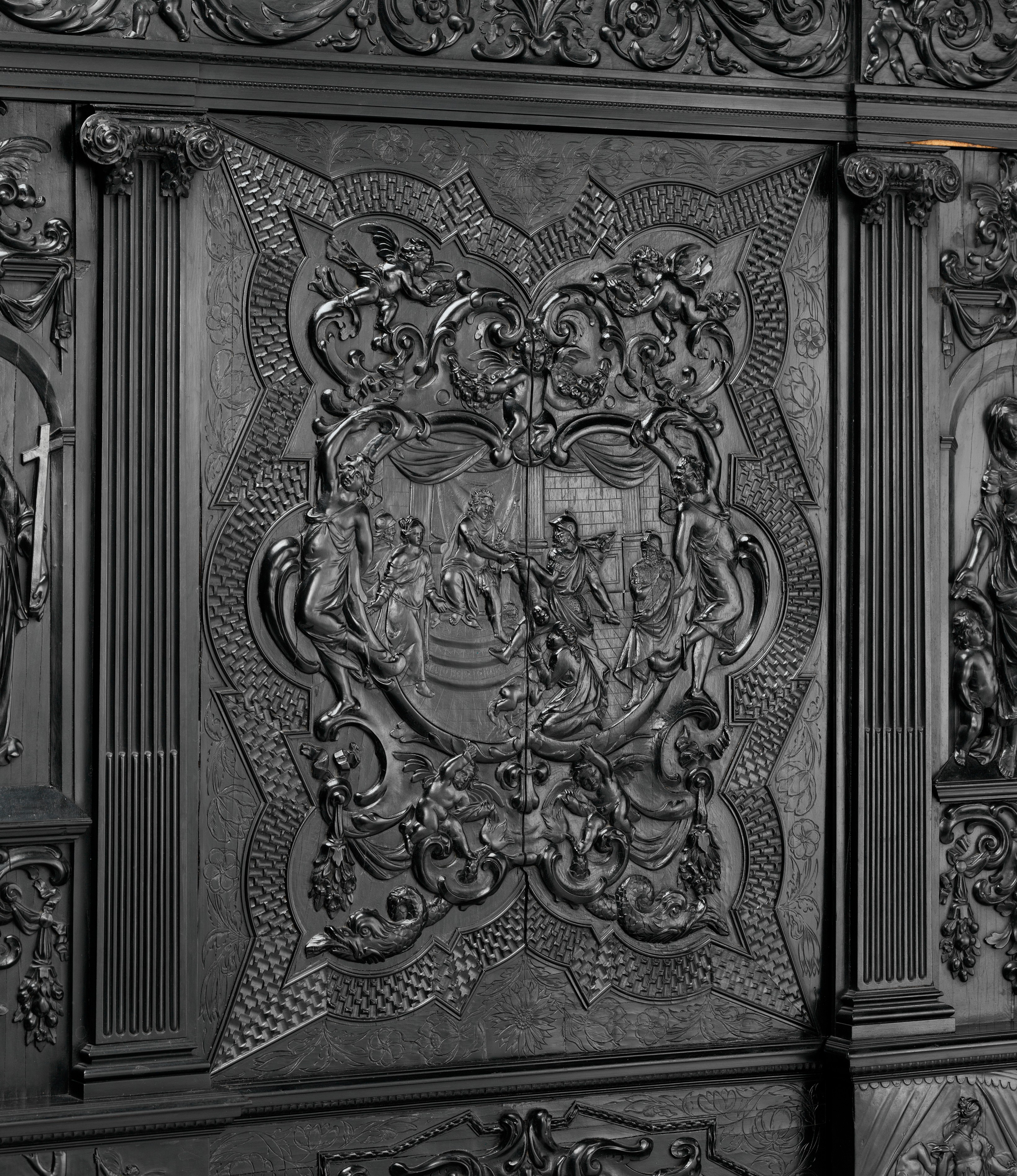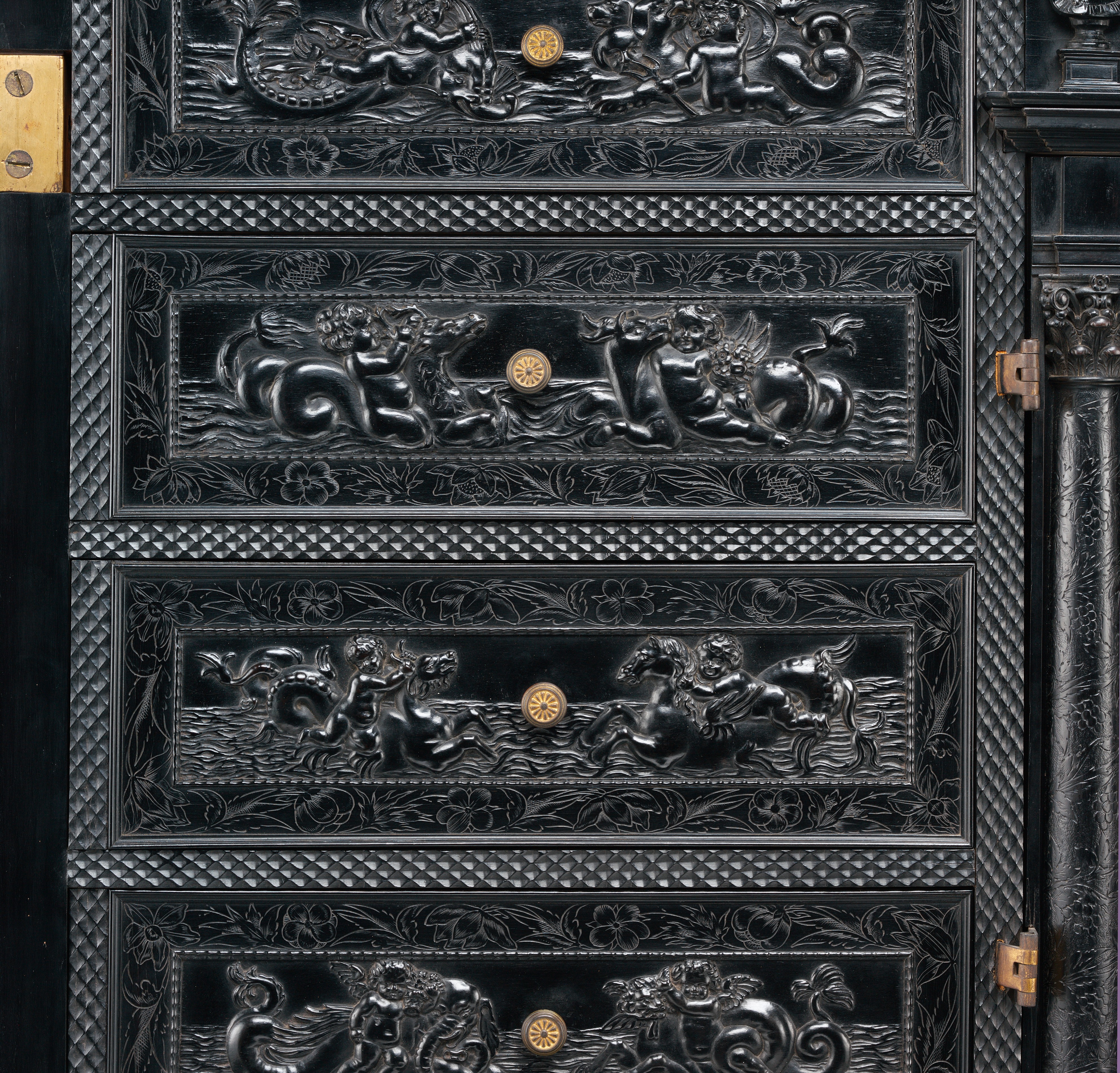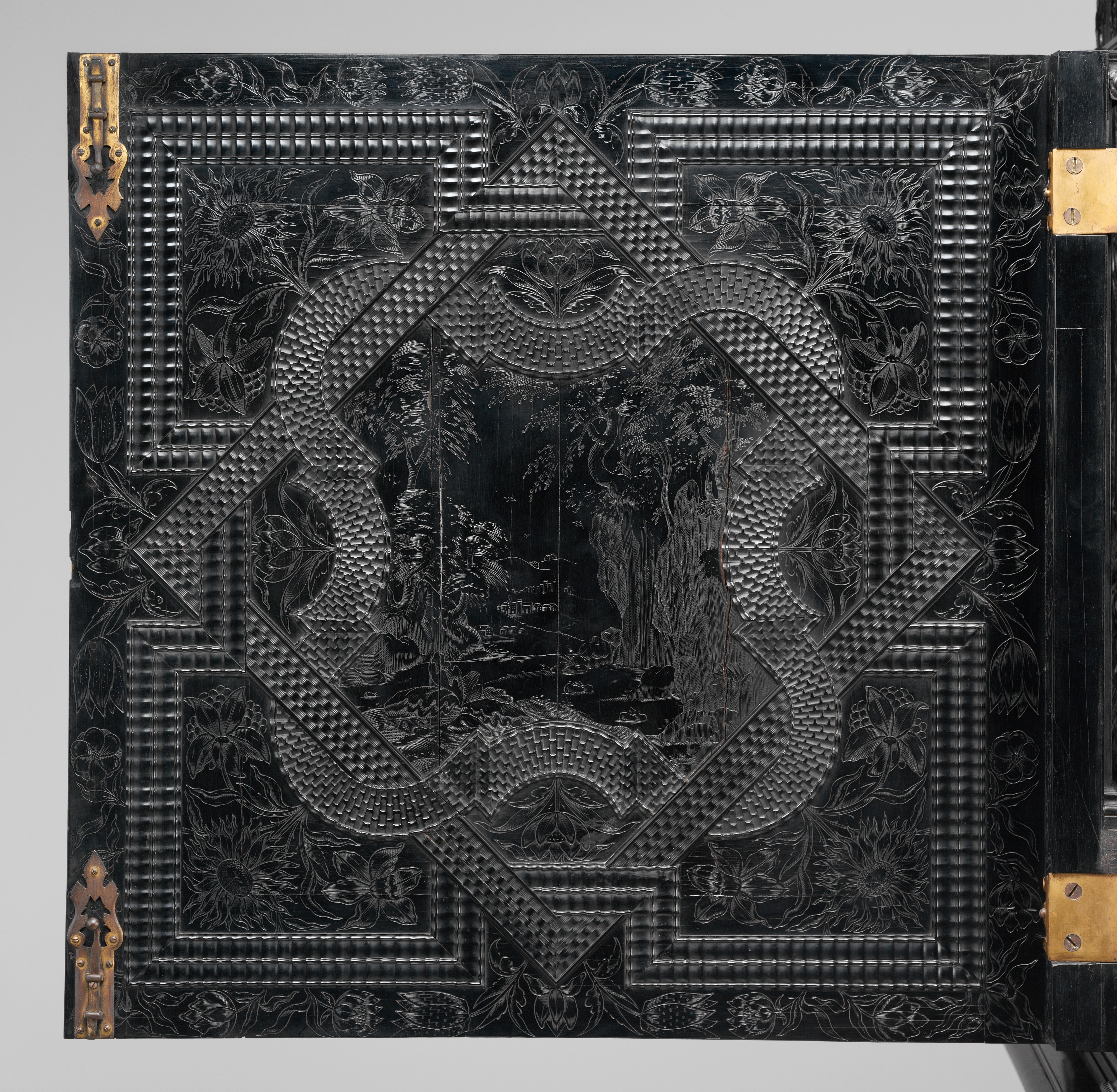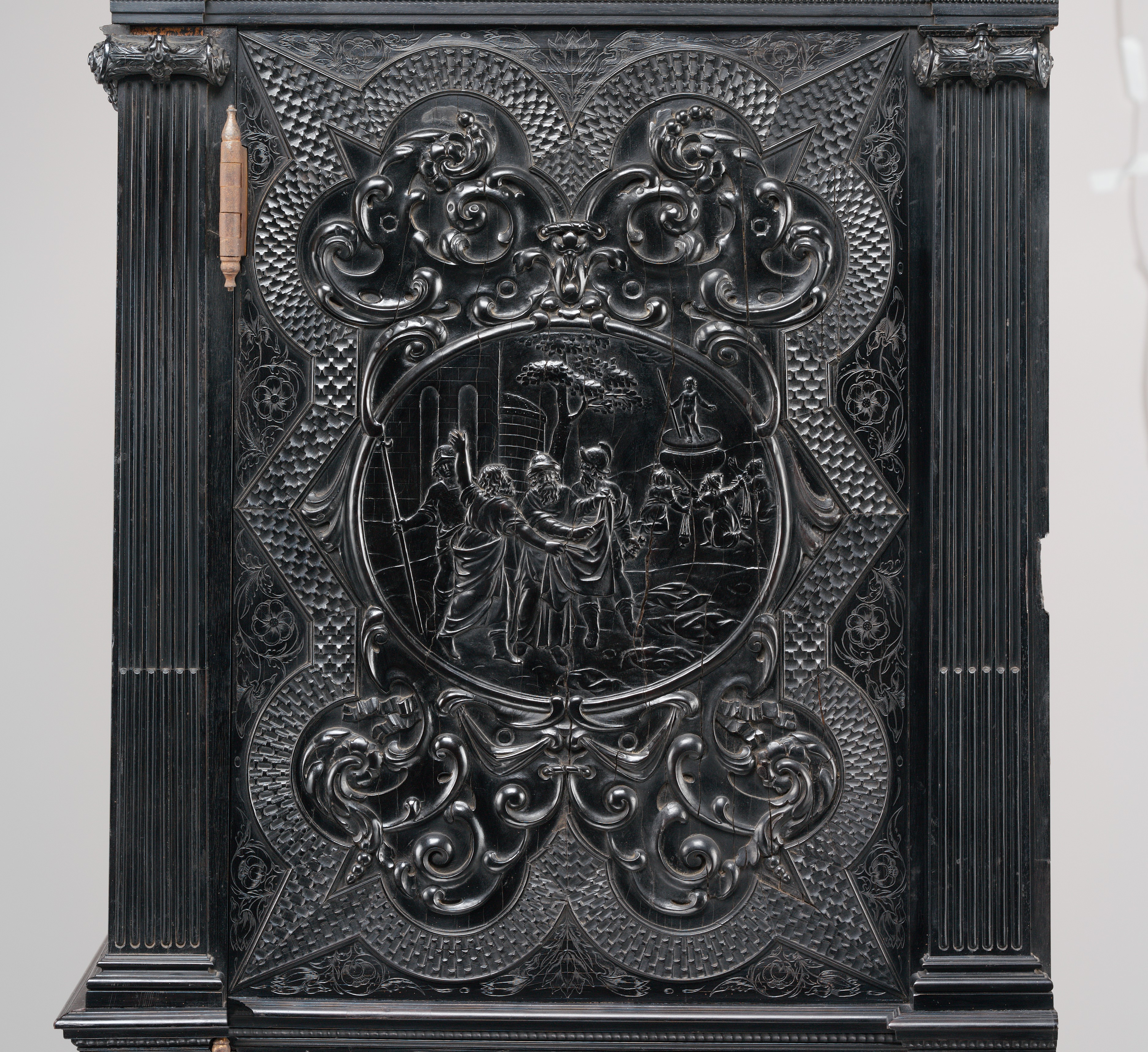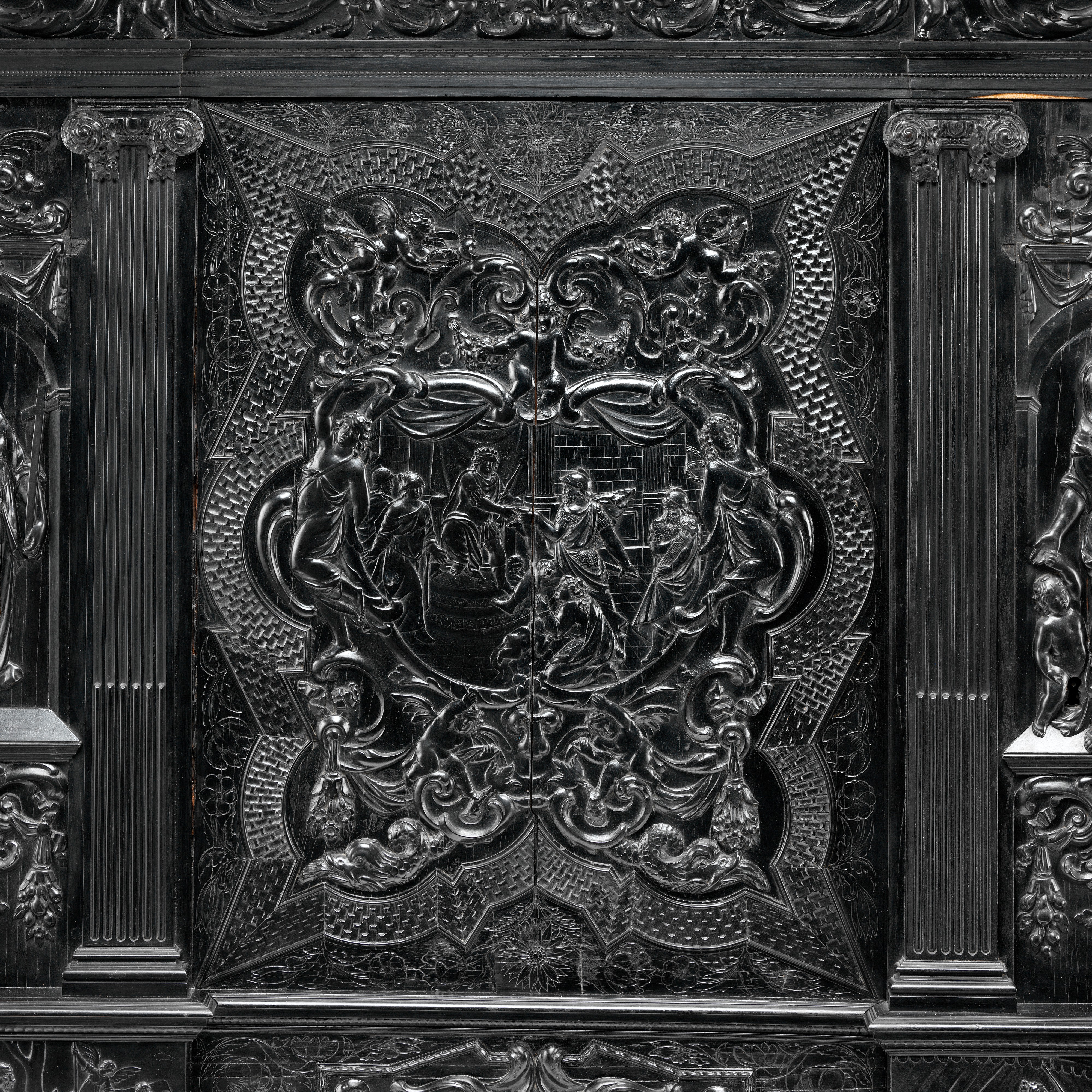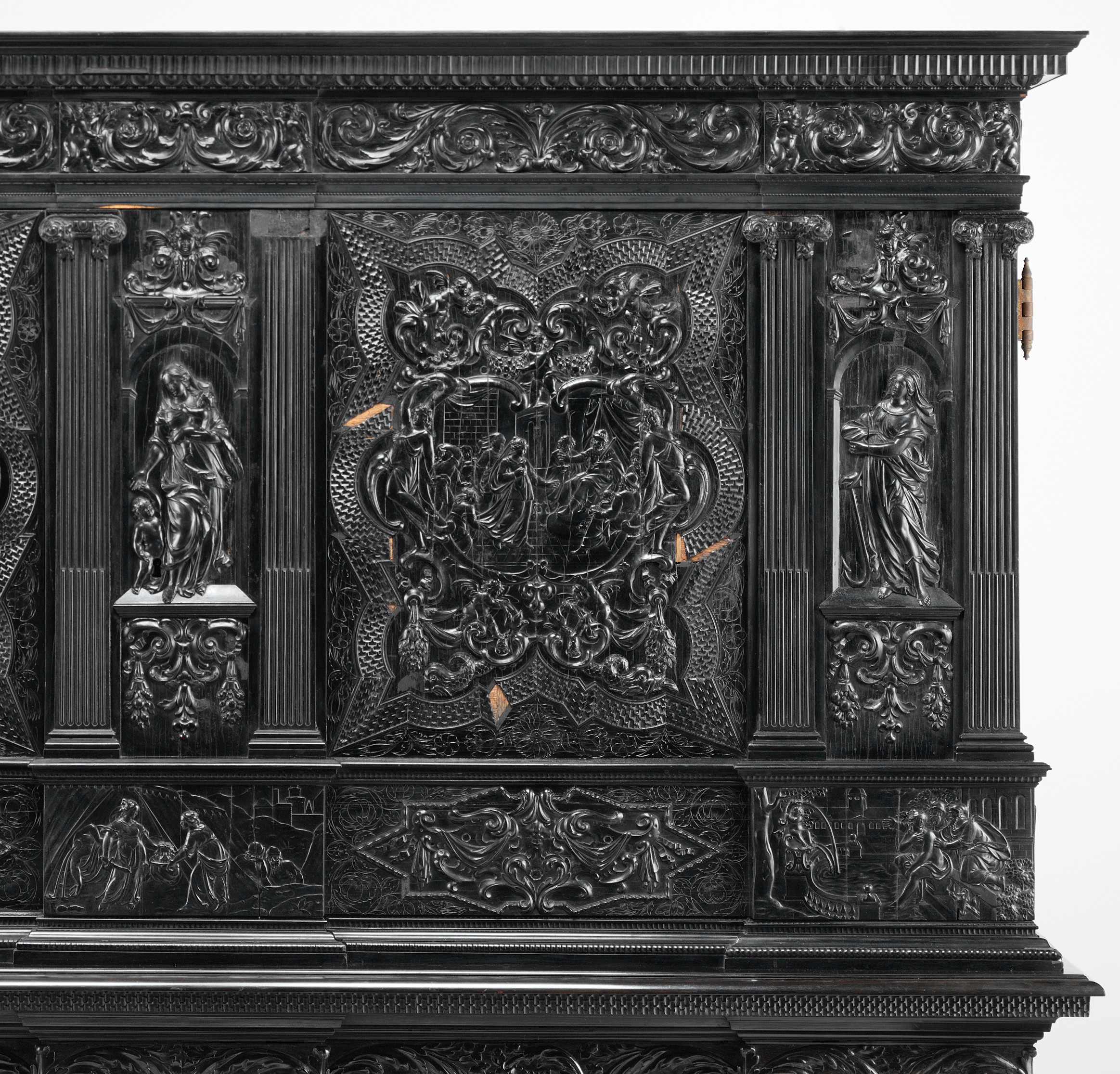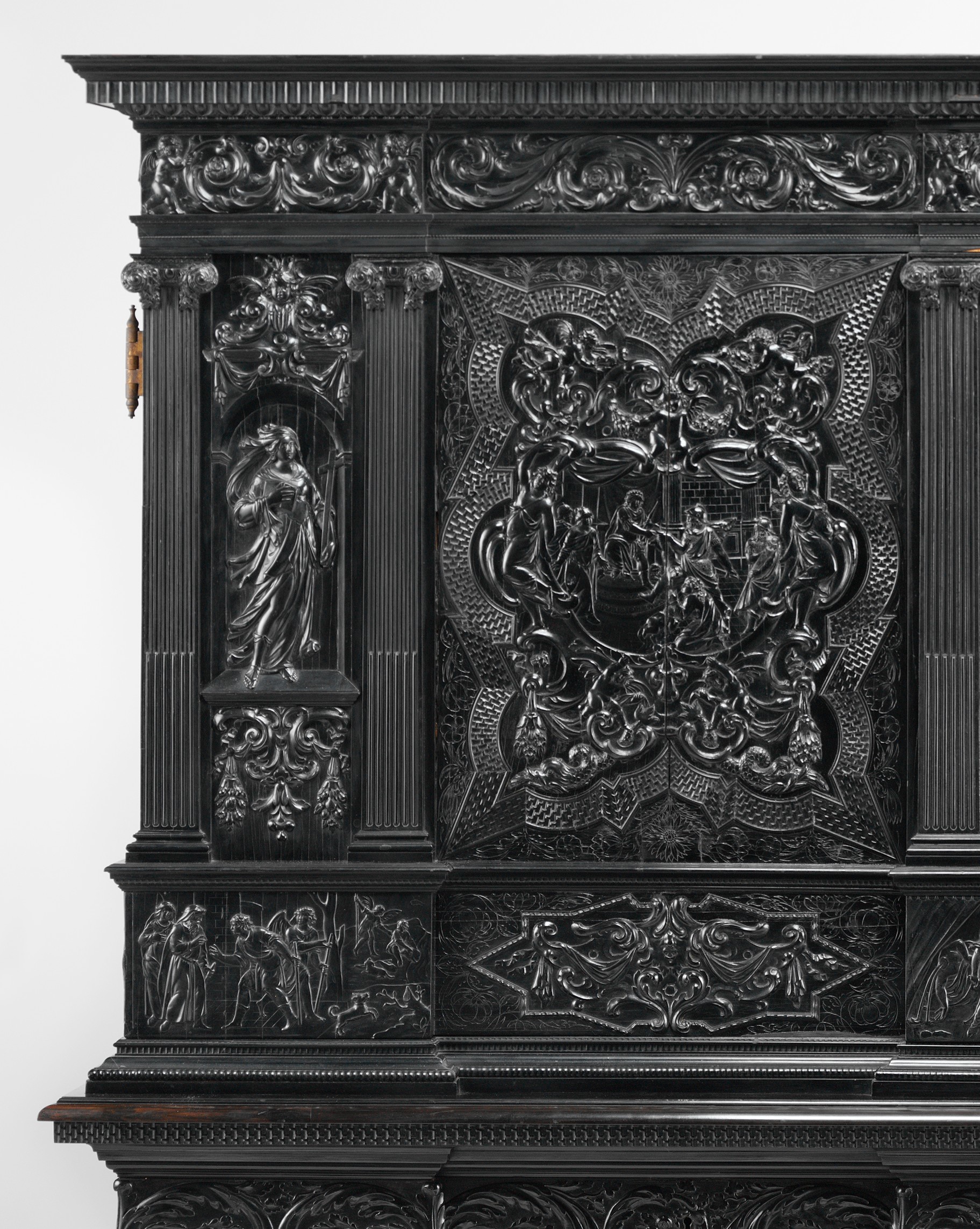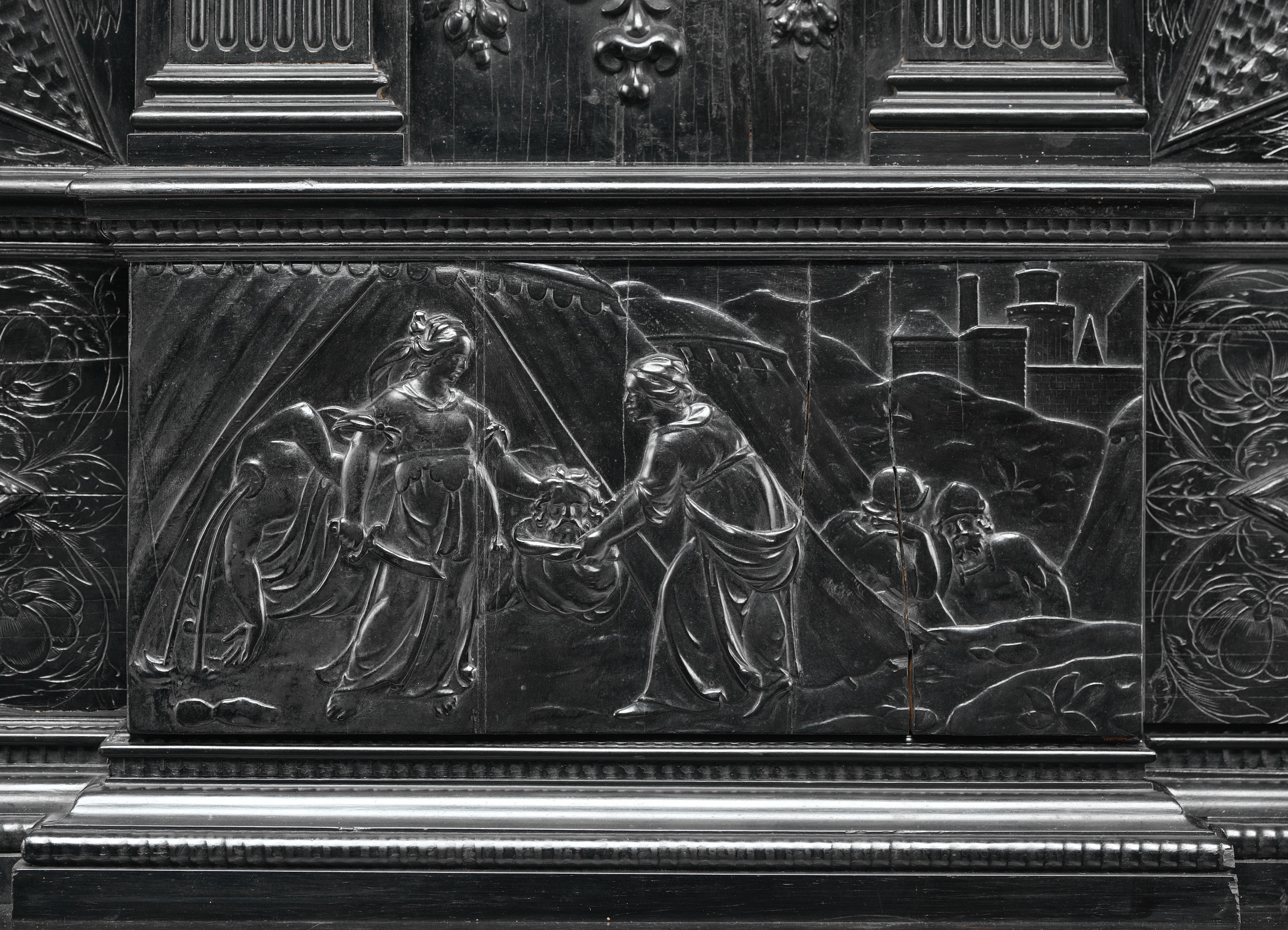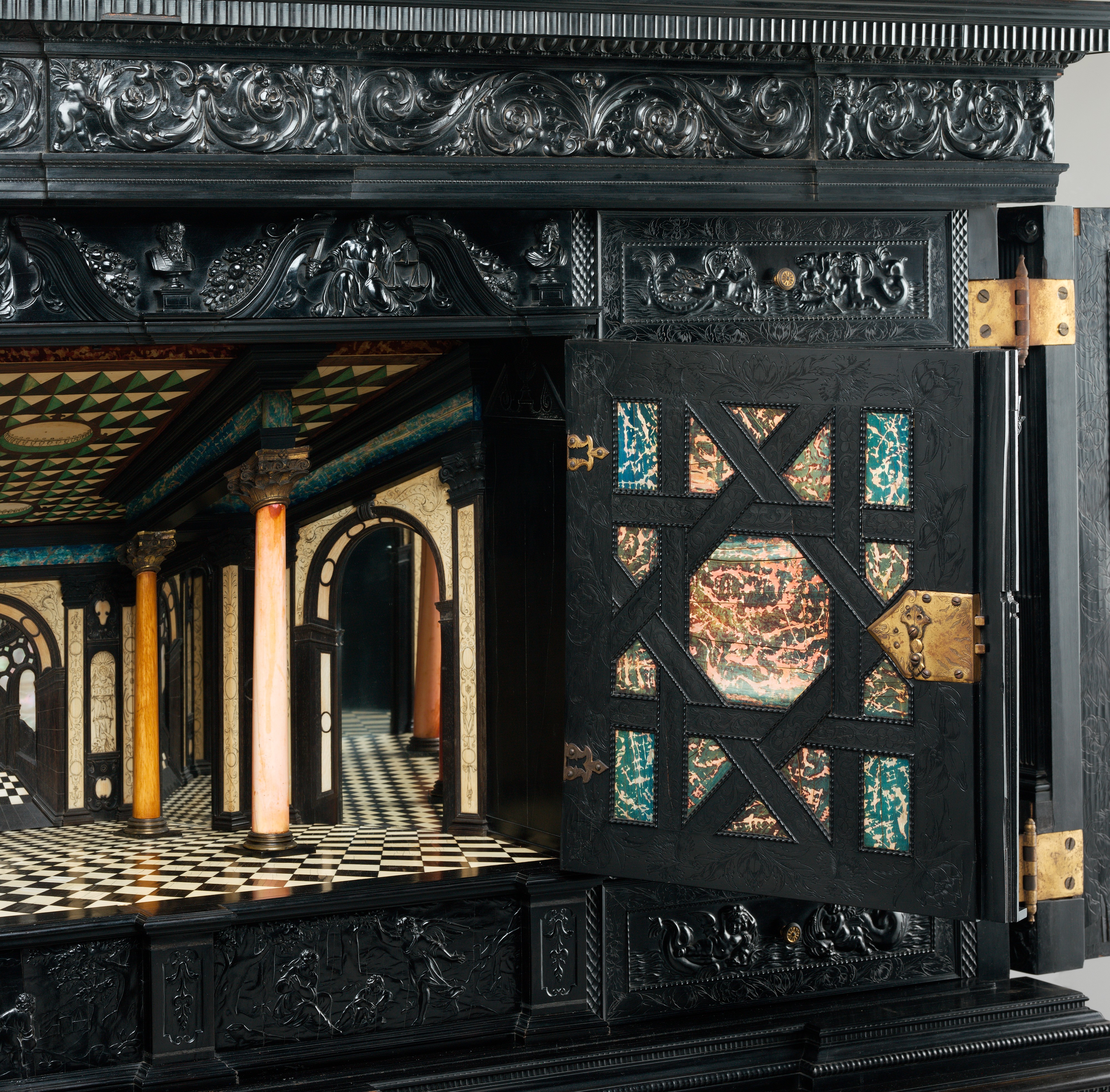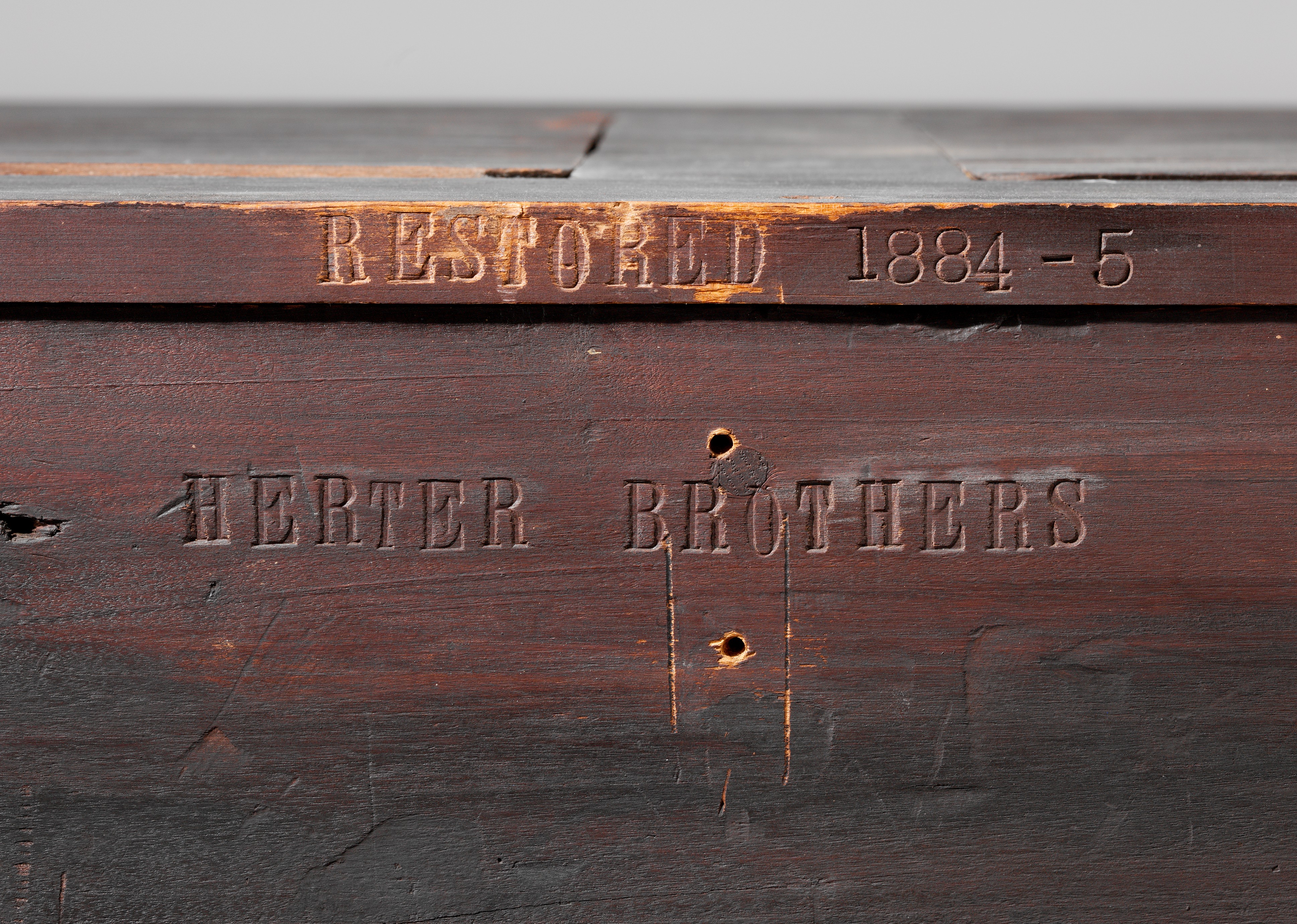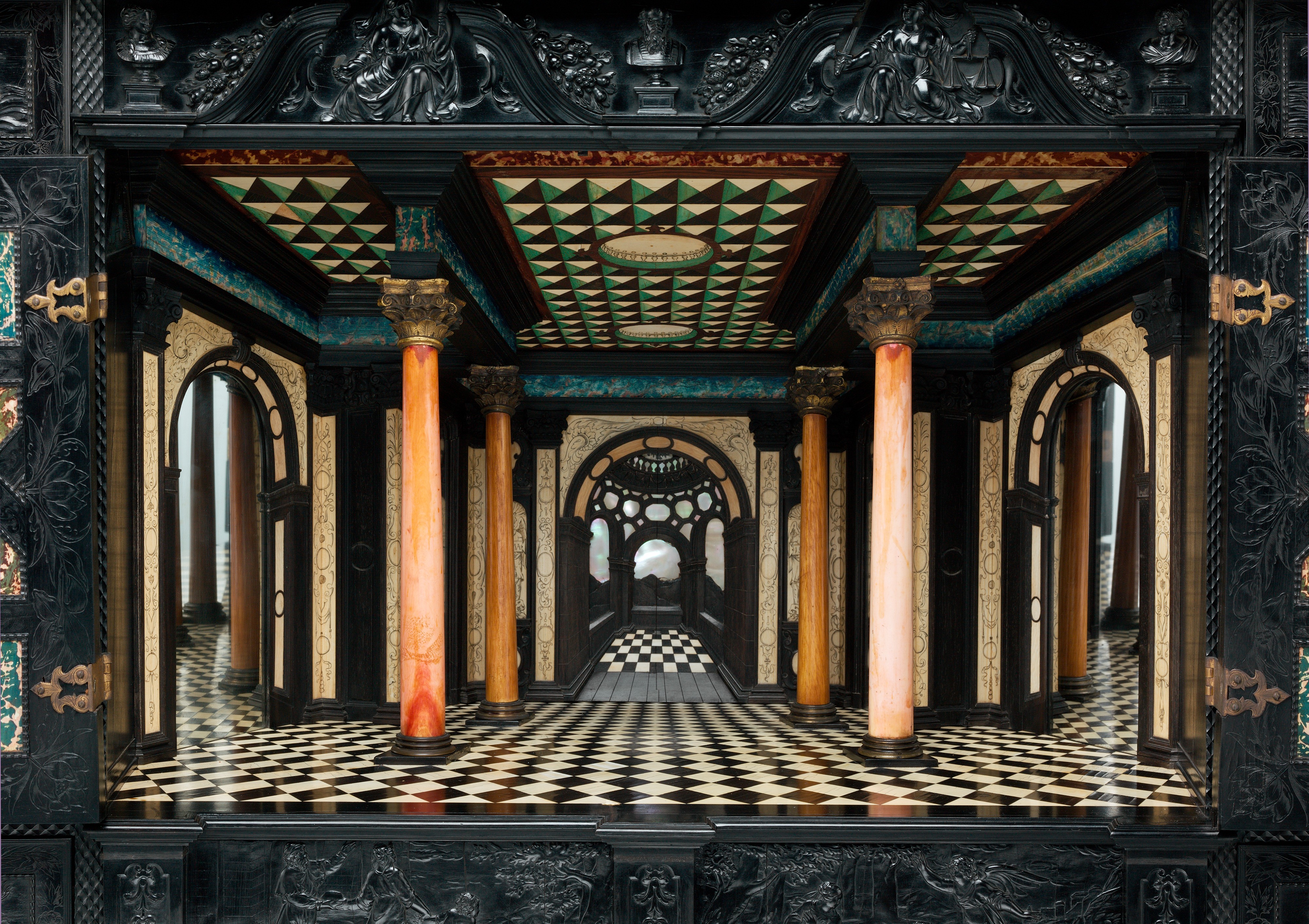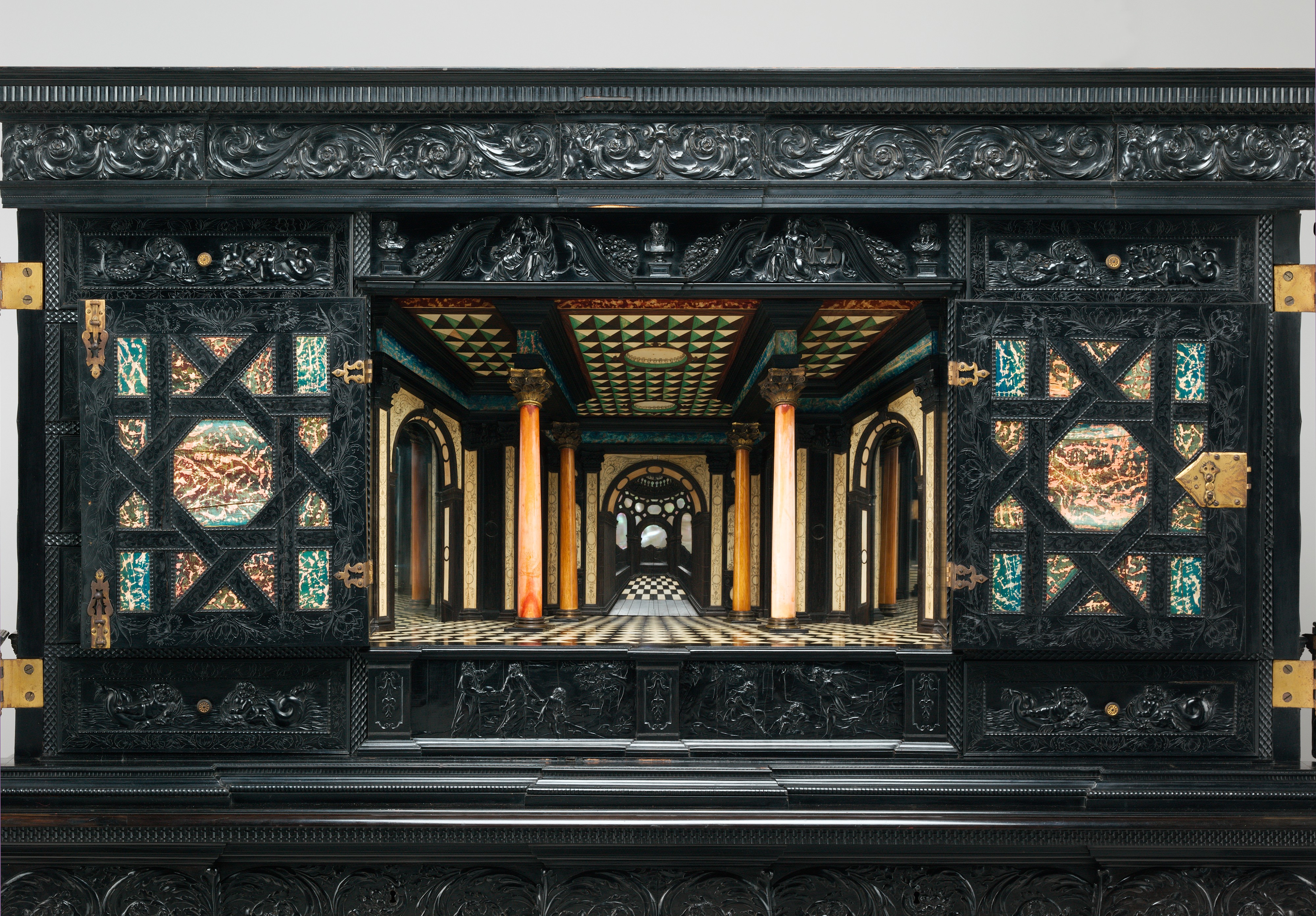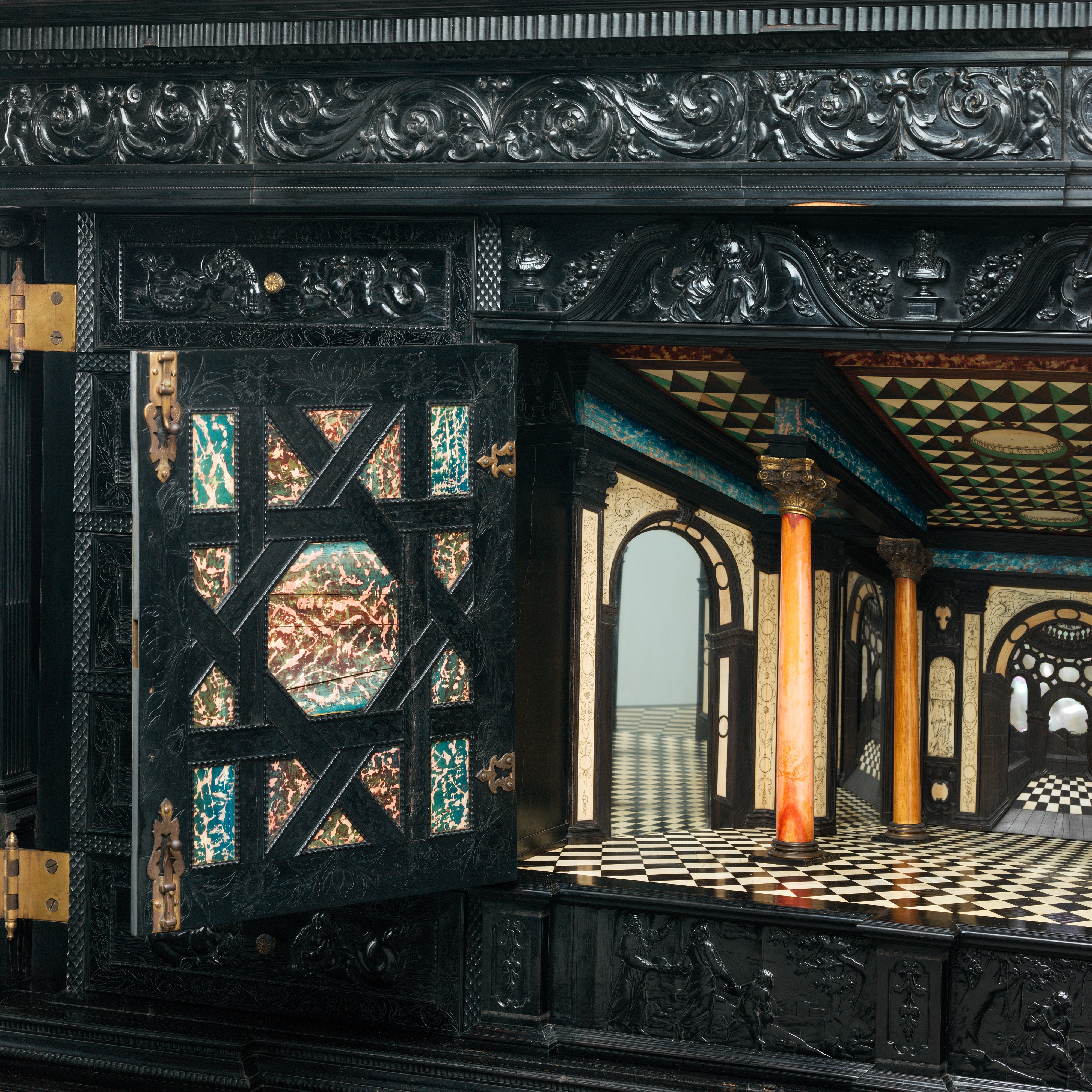Cabinet
Not on view
This imposing cabinet on stand belonged at one time to George Gordon Meade (1815–1872), the American Civil War general who led the Union troops to victory at the Battle of Gettysburg. Largely veneered with lustrous ebony, the architectural piece bears eloquent testimony to the importance to the European economy of overseas trade. In the seventeenth century, for the first time, tropical timber and other exotic materials became available in quantity to European cabinetmakers, who prospered as they set new fashions in furniture. Since imported wood was still a costly commodity in mid-seventeenthcentury France, the unknown cabinetmaker carefully layered the nearly black veneer on the cabinet’s superstructure to minimize the amount of ebony needed. Furthermore, he used blackened, so-called ebonized, pearwood for the lower part, which was, after all, not at eye level. The exterior is richly decorated with ripple moldings and engraved ornament and also displays carved biblical scenes from the Old Testament. Some of them, such as Judith with the head of Holofernes, are based on woodcut illustrations from Figures historiques du Vieux Testament by Jean Le Clerc, first published in 1596 and then in a second edition of 1614. In addition, female personifications of faith, hope, and charity, the theological virtues, are represented in the niches on the cabinet’s exterior, while two cardinal virtues, prudence and justice, are rendered on the interior doors. All the differently treated ebony surfaces reflect the light in various ways and give the object life. In marked contrast with the monochromatic decor of the outside, the central compartment, or caisson, on the inside is brightly colored with marbleized and tinted ivory, bone, and various kinds of wood. Treated as a sumptuous architectural interior, it was meant to surprise the viewer and enchant the eye. The use of mirror glass in the recess offers unexpected perspective views and allows a treasured object placed there to be seen and admired from different angles. Certain elements of this interior date to the late nineteenth century, when the cabinet underwent a major restoration by the leading New York cabinetmaking-and interior-decorating firm of Herter Brothers, whose name and the date 1884–85 are stamped twice on the back.
Due to rights restrictions, this image cannot be enlarged, viewed at full screen, or downloaded.
This artwork is meant to be viewed from right to left. Scroll left to view more.
